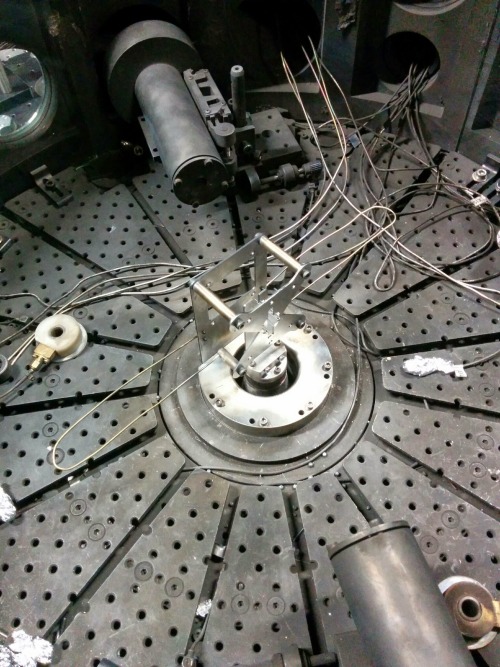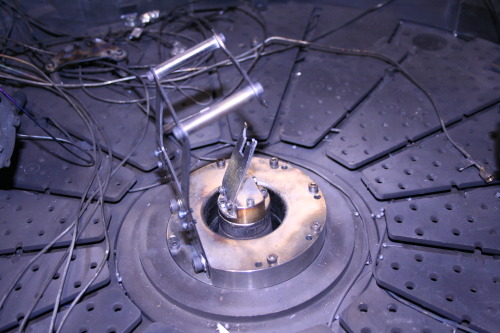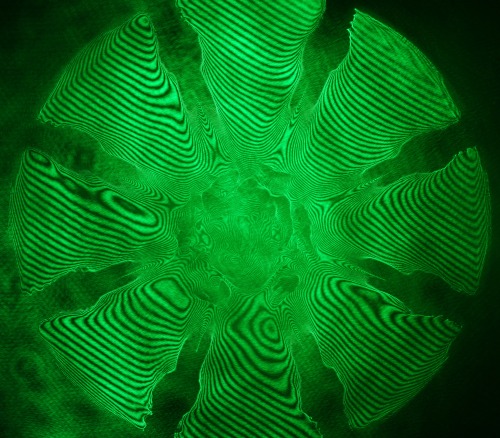I’ve already done some preliminary experiments on passing a large electrical current through some pencil leads to turn them into a carbon plasma – I described the physics involved in my last blog post. Recently I spent three weeks on more experiments on MAGPIE, and the results have been really interesting.

Array hardware loaded in the vacuum chamber, ready for a shot.
We used a neat trick developed on MAGPIE to flip the array by 90′ so that all of the pencils leads lie horizontally instead of standing vertically [1]. This requires a bit of extra hardware to make sure the electric current flows equally through each of the pencil leads, but the pay off is better diagnostic access – we can look at the plasma from more directions at the same time, and so hopefully we can measure more of the plasma’s properties.
The new hardware has been laser cut for us by the Physics Workshop. They use a laser that is focused on a thin sheet of steel to cut out detailed shapes with astonishing precision. It’s very quick and easy, so they can make lots of identical copies of the parts, which is quite useful, because here’s what they look like after a million Amps have passed by:

Array hardware post-shot, smashed to bits
During the shots, everything seems to be going as planned – supersonic jets of carbon plasma smash into each other at the centre of the array, forming a very hot dense plasma. We can measure the density using interferometry, giving stunning images like this:

Interferogram looking at colliding jets of carbon plasma
I’ve spent the last few days writing some code to interpret the Thomson Scattering spectrum, which should yield the temperature of the plasma and how fast it’s going. Initial results give us around 550 eV, which is equivalent to 6 million degrees Celcius.
My experimental run might be over for now, but the work of interpreting the data has just begun. I’ll write more soon on how we use the Thomson Scattering spectrum to work out so much about the plasma.
I should stress that the work we do on MAGPIE requires a large team of people, and I’m indebted to (in no particular order) Lee, Thomas, Guy, George, Jian Wu and Qingguo for their help.
[1] Swadling, G.F.; Hall, G.N.; Lebedev, S.V.; Burdiak, G.C.; Suzuki-Vidal, F.; de Grouchy, P.; Suttle, L.; Bennett, M.; Sheng, L., “Commissioning of a Rotated Wire Array Configuration for Improved Diagnostic Access (October 2014),” Plasma Science, IEEE Transactions on , vol.PP, no.99, pp.1,1
doi: 10.1109/TPS.2015.2388863